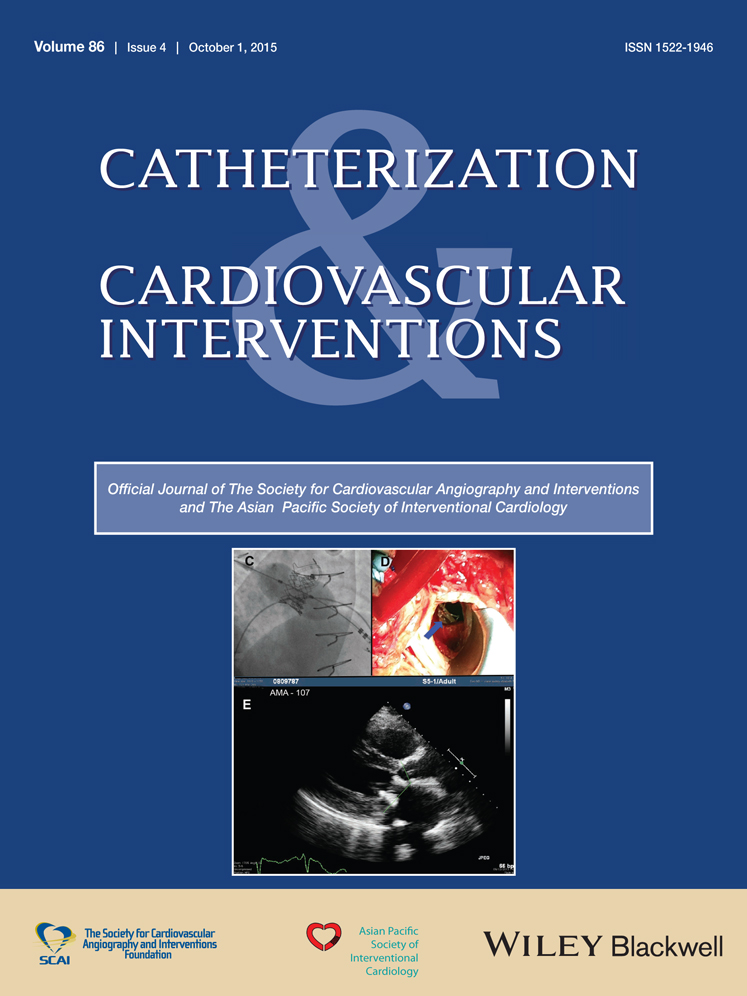Utility of rotational atherectomy and outcomes over an eight-year period
Conflict of interest: Nothing to report.
Abstract
Objectives
To evaluate outcomes of patients undergoing rotational atherectomy (RA) in a multicenter percutaneous coronary intervention (PCI) registry.
Background
RA remains an important technique for plaque modification in PCI, particularly with complex calcification.
Methods
The study population consisted of consecutive patients undergoing PCI in nine major Australian hospitals, who were treated over an 8-year period (June 2004 to June 2012).
Results
Of 16,577 PCI's, 1.0% of patients n = 167 (214 lesions) underwent RA. Patients undergoing RA were more likely to be older (71.0 ± 9.7 vs. 64.4 ±11.9 years, P < 0.01), with greater incidence of diabetes (37.7% vs. 23.8%, P < 0.01) and renal impairment. There was no significant difference in procedural success (94.6% vs. 95.5%, P = 0.57), dissection (6.1% vs. 4.8%, P = 0.39), transient no reflow (4.4% vs. 2.8%, P = 0.23), or persistent no reflow (0% RA vs. 0.7% non-RA, P = 0.23). Those undergoing RA had a low but increased risk of death at 12 months (6.6 vs. 3.6%, P = 0.04). There was no significant difference in 12 month major adverse cardiovascular outcomes (MACE) between groups following adjustment for univariate predictors (OR 1.00, 95%CI; 0.93–1.08). Additionally, there was no significant difference in 30-day MACE (6.0% vs. 5.1%, P = 0.62) or 30-day mortality (2.4% vs. 1.8%, P = 0.54) between groups.
Conclusions
In this large multicenter registry, RA continues to be used to treat complex lesions with low procedural complications and MACE rates. It is essential for interventional cardiologists to maintain skills in RA to enable effective percutaneous treatment of certain complex lesions. © 2015 Wiley Periodicals, Inc.




